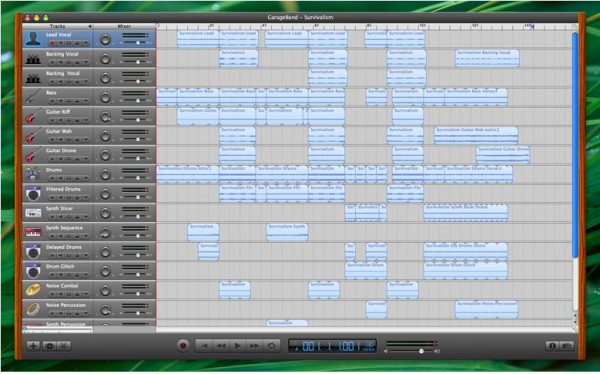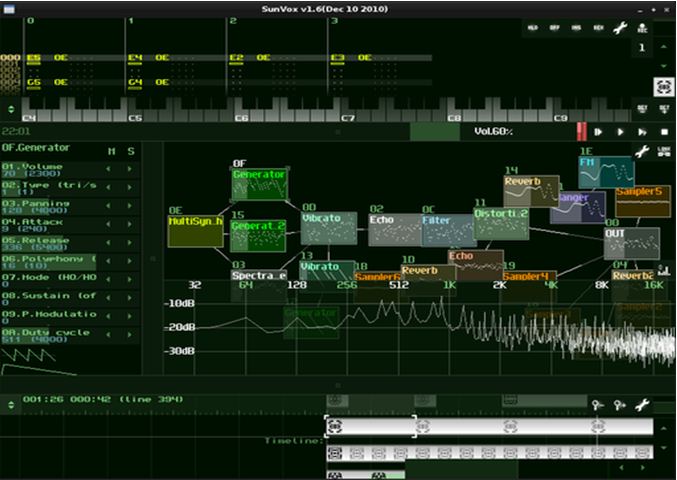Dear K&M blog readers,
Bonjour and hello from Canada! I’m pleased to report on some of my experiences in Canada.
Before I start, a couple of things about me:
My actual position at König & Meyer is Area Sales Manager. My job is to manage the care and service received by our customers in many countries in Europe and Africa. After working there for about seven years, I got an excellent opportunity to spend six months in Canada. I received my official “work and travel” visa in April 2014. Then I spoke with our executive management, and we agreed on a six-month leave of absence. This break is opening up twofold opportunities: First, there is a highly committed intern who is handling the day-to-day business with my customers, and second, my colleagues are getting to pitch in. They definitely won’t be bored during this time.
Now for the actual topic of my post: my trip to Canada. I booked the trip via AIFS, a travel agency that specializes in work and travel and study abroad trips. This gives me peace of mind, since the flight and health and travel cancellation insurance are all included in the package. I also know that I will always have a capable point of contact locally.
The trip started out on August 14, when I flew from Frankfurt to Toronto. While there, I met a number of other German work and travel participants right away. Interestingly, almost all of them had just gotten out of high school – making me the “oldie” in the group. 😉
Once we arrived at Pearson International Airport, we set off with all our luggage (in my case, a 75-liter backpack, a rolling bag and a daypack) for the HI hostel, which is extremely centrally located, making it a perfect starting point for exploring the city. Anyone who might have been thinking only English was spoken from then on was mistaken. Toronto is one of the two cities in Canada (Vancouver is the other) where almost all tourists enter the country. Thus it came as no surprise to find that about half of those staying in the hostel were German (plus other travelers from Switzerland and Austria). It’s still strange to meet so many people who speak German so far from home.
Hostel living is unusual, but I definitely mean that in a good way. Starting right away at breakfast, you run into an incredible jumble of languages, and it’s very easy to strike up a conversation with travelers from all over the world (or, of course, Germany). Obviously, it’s no luxury hotel, and you might find yourself having to change beds or rooms every two days – if you didn’t make your booking in advance, like me. Some of the German girls could write a book about having to pack their bags all over again every day and move to another floor…
But there were a lot of great things about the hostel, including the various activities going on in the bar in the hostel basement, such as karaoke, comedy evenings, and various band gigs.
And one note about beer: a pitcher costs just 15 dollars here (otherwise, drinks are really very expensive if you’re moving around the city). One reason the price seems so low is that tax isn’t included, as it is in Germany; you should never forget to figure out the tax on top of the price.
My time in Toronto was packed with a lot of great things (since all I was doing there was vacationing). I’ll limit my report to just three highlights:
First was my trip to the Toronto Islands, which can be reached in about 30 minutes by ferry from Toronto. I went there with a couple of Germans travelers for a few hours to enjoy the sunset. I would recommend to anyone planning a visit to Toronto to spend the whole day there, since the islands offer a huge park area with barbecue pits and various other recreational options. Looking out over the city skyline at sunset was truly fascinating. I also enjoyed watching planes approach City Airport. Every time, it almost looks as though they are going to land in the water.
My trip to Niagara Falls was also impressive. The city of Niagara is very touristy, and looks the part, like a minor offshoot of Las Vegas – but visiting is still an absolute must. I think the pictures show why. Unfortunately, we let ourselves get talked into a package at the hostel that included not only this trip, but also wine tasting, bike rental, and a brewery tour. The wine tasting in particular was completely useless, and there wasn’t even enough time for me to rent a bike. But that doesn’t matter; the brewery tour was definitely worthwhile (see below).
Last but not least, I just happened to get the chance to watch a baseball game. It was really funny how it came about. It was a Sunday, and I spontaneously decided to join in for the brewery tour. The brewery, the Steam Whistle Brewery, is based right near the harbor on Lake Ontario, with the CN Tower and Rogers Centre (originally the SkyDome) in the background, so it is right amid other major tourist attractions and is easy to combine with other sights and events. At least half of the brewery’s guests that day were wearing Blue Jays jerseys, enjoying free beer samples to “warm up” for the event.
After the tour, I started talking with Richard, a Canadian who was in town for the day and planned to end the evening at the Blue Jays game. He had two tickets, but the friend who had been supposed to go with him had suddenly cancelled. After I had told him my “to do” list (seeing a baseball game was at the top), he invited me right then and there to go with him and watch the game against the Boston Red Sox. How could I refuse such a perfect opportunity? 😉
Richard ended up springing for a few rounds of beer (which, of course, cost twice as much at the stadium, and only Budweiser is available) and trying to explain baseball to me a bit. The sport had barely registered with me before then, so it was practically an impossible task, since the rules seem to be fairly complicated. But the mere fact of having been able to experience one of North America’s top sports live was unforgettable. Besides that, the game also took place in one of Canada’s most breathtaking baseball stadiums, with the CN Tower rising right above the stands. Amazing!!!
Other impressive parts of my visit were the trip to the Toronto Zoo, visits to a number of restaurants – especially Asian ones – my first experience with couch surfing, and a few evenings spent at the hostel bar, where there was something going on almost every night.
Greetings from Canada / Salutation du Canada!
Ulrich
The Best Apps For Composing Music
Marcela De Vivo is a freelance writer from Los Angeles who writes about a wide range of industries, including travel, health, business and marketing. She always enjoys learning about new artists and uses Arena to find new music to add to her playlists.
If you’re comfortable with using regular desktop recording software to compose and record music, working with apps that provide the same tools is the next step in capturing inspiration. Ideal for musicians, composers and producers who are on-the-go, these apps allow you to capture a musical idea, even if you’re not in your studio or in front of a computer.
With thousands of options that allow you to play with music available, finding one that provides the studio tools and quality can be tricky. Some of these apps are for experienced producers who have used the desktop versions; others are for the average music lover who is just starting to dabble with producing their own music. Regardless of experience level, these apps are some of the best in the field.

Image courtesy of Chris Messina / Flickr.com
1) Garageband
Apple’s own music composition software, with its multi-touch keyboard, is easy to use and allows you to play your Apple mobile product like a literal instrument. The collection of Touch Instruments includes pianos, organs, guitars, drums and basses. The Smart Instruments will make you sound like you’ve been playing for ages, even if you’ve never played a note before.
Modify echo, chorus or tremolo with ease or plug an electric guitar into your Apple product and play through classic amps and stompbox effects.
GarageBand can also serve as a full recording studio—record music live with up to three friends.
2) Korg IMS-20
The mobile recreation of the MS-20 is a great app for the experienced producer/musician/composer. Complete with an analog sequencer, drum machine and dual Kaoss Pads, it also has a 7-channel mixer that creates 14 different master effects.
Like the original MS-20, the iMS-20 features the popular filters that create the unique distortion elements. Through SoundCloud integration, you are able to share your creations with others.
A complete music production app, Korg IMS-20 allows you to produce music even while not at your studio.
3) NanoStudio
A virtual recording studio for Apple mobile products (iPad, iPhone, iPod Touch), NanoStudio is an app that has virtual analogue synths, sample trigger pads, a comprehensive sequencer, a sample editor, a mixer and multiple effects like reverb, compression and EQ. You can also buy a “16 Instrument” addition to improve the experience for newer devices.
Mix layers and samples and compose and arrange your music using the sequencer, all in real time. Share your completed work on SoundCloud—or use the MIDI export feature to transfer your work over to your desktop digital audio workstation.

By NightRadio (Own work) [Public domain], via Wikimedia Commons
4) SunVox
As a fast, small and powerful synthesizer, SunVox is one of the most powerful music creation apps for iOS. Musicians can create music from anywhere they are, whether they have their guitar or piano tuned or not.
Full of impressive features, including a range of synths, effects and other modules, creating studio quality songs is simple. Available for free on a variety of devices, including Mac OS X and Windows, any musician should certainly give this app a try.
5) FL Studio Mobile HD
The mobile version of the popular FL Studio has almost all the same tools as the desktop version, making them both compatible and allowing you to load mobile projects into the desktop digital audio workstation.
Complete with a 99 track sequencer, filters, over 100 instruments (including 11 drum kits), a virtual piano and eight channel recording, this app is ideal for creating and saving multi-track projects without being tied to your desktop. A good way to begin composing music or to develop ideas, this app is great for the experienced musician or producer—someone who has an understanding of song structure, notes and timing.
If you are not familiar with the desktop version, this app may be slightly complicated; however, an instruction guide will help you through the basics and training is available by registering with Image Line Software.
With these apps, you can make music anywhere you go. Build anything from a simple idea to a fully-fledged song with surprising levels of complexity with these music production apps. No longer tethered to a desktop studio, you can take advantage of inspiration whenever it strikes.
